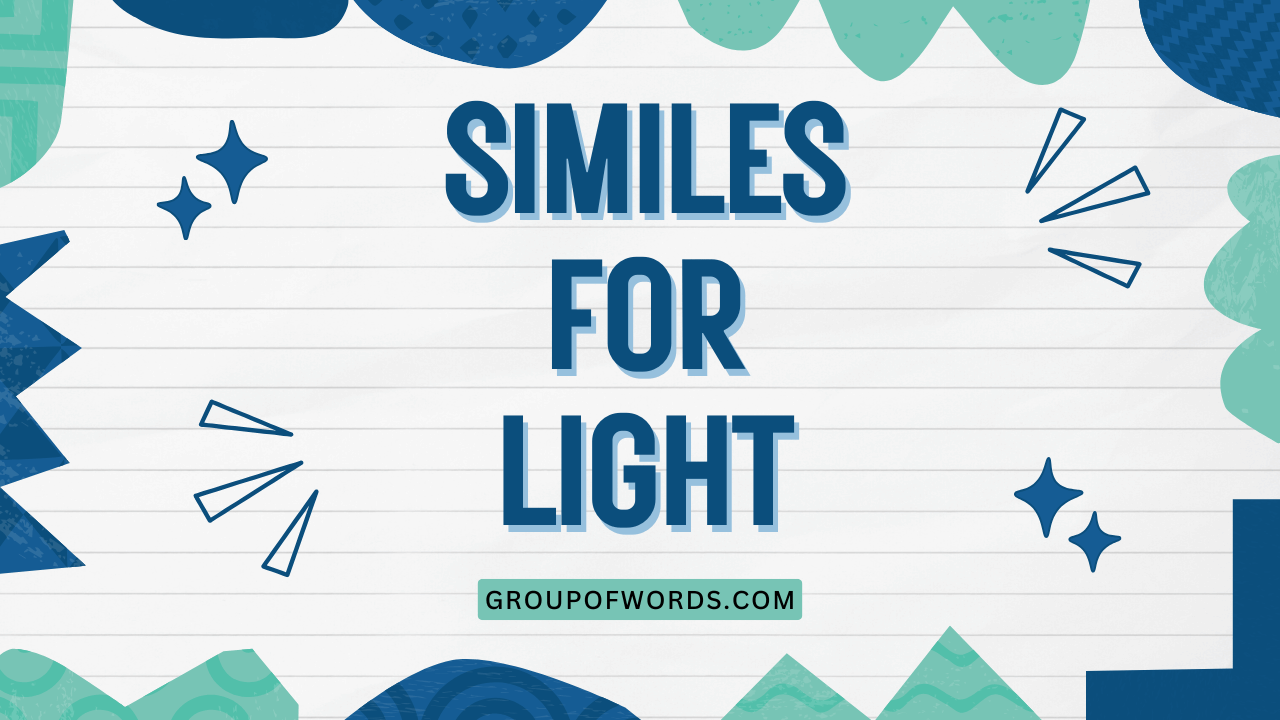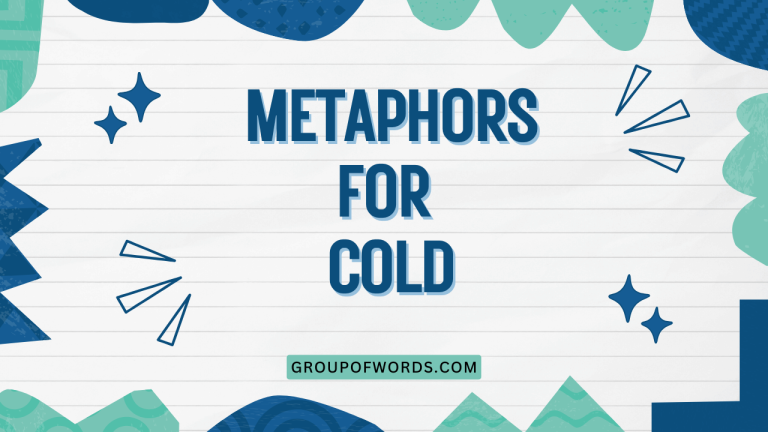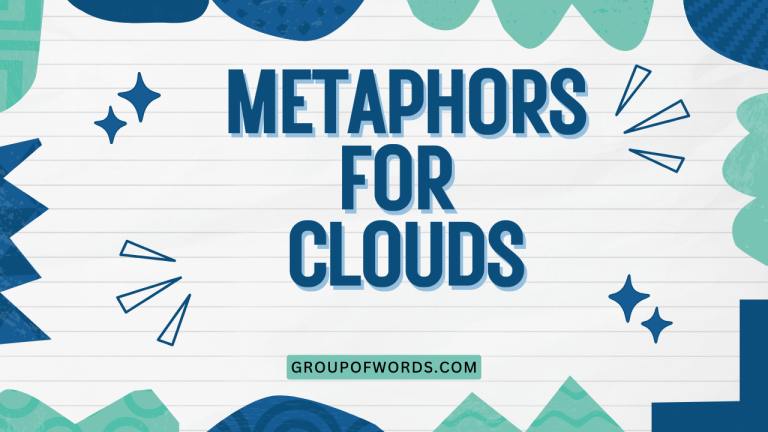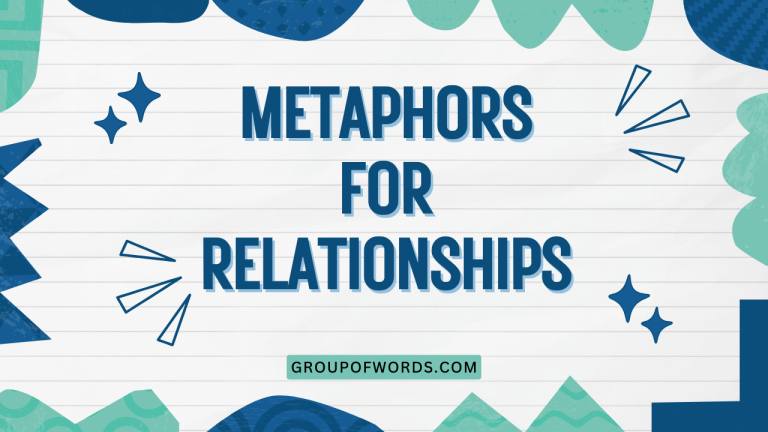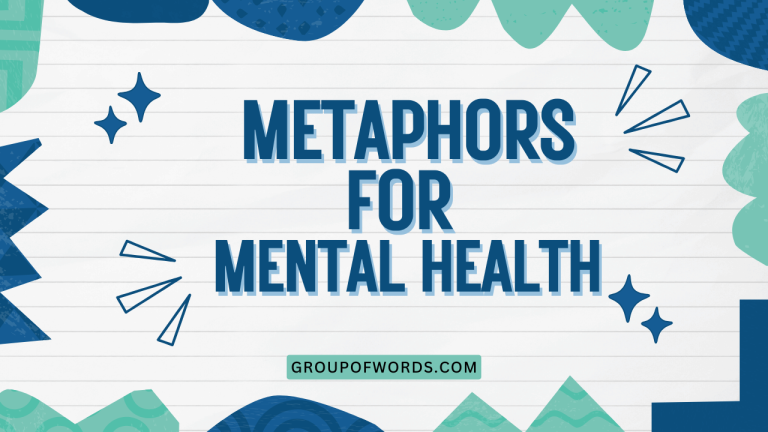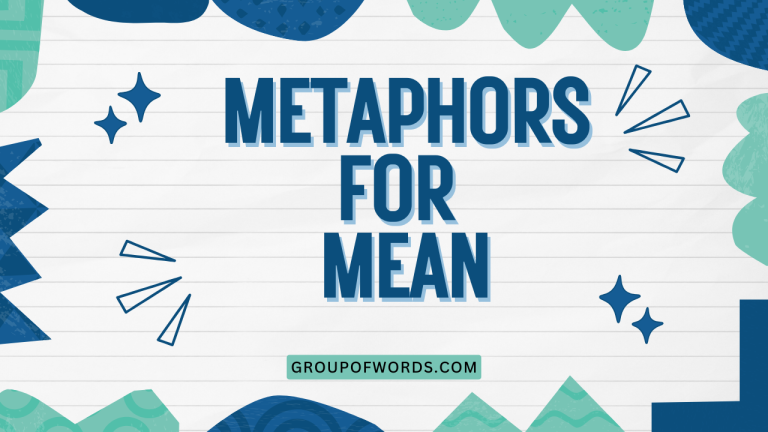Illuminating Language: Mastering Similes for Light
Similes are powerful tools in the English language, allowing us to paint vivid pictures and create deeper connections through comparison. Understanding how to effectively use similes, particularly those related to light, can significantly enhance your writing and speaking skills.
This article delves into the world of similes for light, exploring their definitions, structures, variations, and proper usage. Whether you’re a student, a writer, or simply someone looking to improve their command of English, this guide will provide you with the knowledge and practice you need to master this essential aspect of figurative language.
This comprehensive guide caters to learners of all levels, from beginners grasping the basics of simile construction to advanced speakers aiming to refine their stylistic choices. By the end of this article, you’ll be equipped with a rich vocabulary of light-related similes and a solid understanding of how to use them effectively in various contexts.
Table of Contents
- Definition of Similes for Light
- Structural Breakdown of Light Similes
- Types of Similes for Light
- Examples of Similes for Light
- Usage Rules for Similes for Light
- Common Mistakes with Similes for Light
- Practice Exercises
- Advanced Topics in Similes for Light
- Frequently Asked Questions
- Conclusion
Definition of Similes for Light
A simile is a figure of speech that directly compares two different things using the words “like” or “as.” Its primary function is to create a vivid image or add deeper meaning by highlighting the shared qualities between the two things being compared. In the context of “similes for light,” we are specifically looking at comparisons where light, or an aspect of light, is one of the elements being compared.
Similes for light can be used to describe the brightness, color, intensity, movement, or even the emotional effect of light. They are particularly useful in descriptive writing, poetry, and even everyday conversation when you want to evoke a strong sense of imagery.
Understanding similes allows you to use language more creatively and effectively, adding depth and richness to your communication.
For example, instead of simply saying “the sun was bright,” you could say “the sun was as bright as a spotlight,” creating a much more impactful and memorable image in the reader’s mind. This ability to convey specific qualities and sensations is what makes similes such a valuable tool in language.
Structural Breakdown of Light Similes
The basic structure of a simile is relatively simple. It consists of two main components: the subject being described (in this case, light or an aspect of light) and the object it is being compared to, connected by the words “like” or “as.” Understanding this structure is crucial for creating effective and grammatically correct similes.
The general formula for a simile is: A (subject) + is like/as + B (object). In similes for light, “A” would be something related to light, such as the sun, a lamp, a candle, or even an abstract concept like hope or knowledge, when being discussed in terms of illumination. “B” would be the object used for comparison, which could be anything that shares a similar quality with the type of light being described.
Here are a few examples illustrating this structure:
- The moon was as pale as a ghost. (Describing the color of moonlight)
- Her smile was like sunshine. (Describing the warmth and brightness of a smile)
- The stars twinkled like diamonds in the sky. (Describing the brilliance and sparkle of stars)
By understanding the core structure, you can begin to experiment with different combinations and create your own unique and compelling similes for light. The key is to focus on the specific qualities you want to highlight and choose objects that effectively convey those qualities through comparison.
The more creative and evocative your comparisons, the more impactful your similes will be.
Types of Similes for Light
Similes for light can be categorized based on the specific aspect of light they are describing. This section will explore different types of similes, focusing on brightness, dimness, color, movement, and intensity.
Understanding these categories will help you choose the most appropriate simile for your intended purpose.
Similes Describing Brightness
These similes focus on the degree of luminosity. They are used to convey how radiant or brilliant something is by comparing it to other bright objects or phenomena.
Examples include comparing the sun to a spotlight or a star to a diamond.
Similes Describing Dimness
These similes describe the lack of light or a subdued level of illumination. They often involve comparisons to things that are dark, faded, or obscured.
Examples include comparing a dying ember to a memory fading away or a room to a cave.
Similes Describing Color of Light
These similes focus on the specific hues and shades of light. They are used to describe the color of light by comparing it to other objects with similar colors.
Examples include comparing the sunset to a painter’s palette or the moonlight to silver.
Similes Describing Movement of Light
These similes describe how light moves or flickers. They often involve comparisons to things that move in a similar way, such as dancing flames or shimmering water.
Examples include comparing a candle flame to a dancer or sunlight through leaves to dappled shadows.
Similes Describing Intensity of Light
These similes describe the strength or power of light. They are used to convey how strong or weak the light is by comparing it to other intense or weak phenomena.
Examples include comparing the glare of headlights to a laser beam or the faint glow of a firefly to a whisper of light.
Examples of Similes for Light
This section provides a wide array of examples of similes for light, organized by the categories discussed above. Each category will have its own table of examples to provide clear and detailed illustrations of different types of light similes.
Examples of Similes Describing Brightness
The following table provides examples of similes that describe the brightness of light, using comparisons to other radiant objects and phenomena. These examples are designed to illustrate how you can use similes to convey a sense of intense luminosity.
| Simile | Explanation |
|---|---|
| The sun was as bright as a supernova. | Emphasizes extreme brightness, comparing the sun to an exploding star. |
| Her smile was like sunshine. | Conveys warmth and radiance. |
| The stars shone like diamonds in the sky. | Highlights the brilliance and sparkle of stars. |
| The lighthouse beam was as bright as a spotlight. | Illustrates the piercing intensity of the light. |
| His eyes were as bright as burning coals. | Suggests an intense and passionate gaze. |
| The moon was like a silver disc in the night. | Highlights the luminous quality of the moon. |
| The city lights were as bright as a galaxy. | Portrays the vast and brilliant expanse of city lights. |
| The stage lights were like a thousand suns. | Emphasizes the overwhelming brightness of the stage. |
| Her intellect was as bright as a laser. | Conveys sharpness and clarity of thought. |
| The freshly polished silver gleamed like a mirror. | Illustrates the reflective brightness of the silver. |
| His future looked as bright as a sunny day. | Suggests optimism and promise. |
| The Christmas tree lights twinkled like tiny stars. | Highlights the festive sparkle. |
| The fireflies glowed like miniature lanterns. | Conveys the delicate and enchanting brightness. |
| The neon sign blazed as bright as day. | Emphasizes the vibrant and attention-grabbing nature of the sign. |
| Her spirit shone like a beacon. | Suggests guidance and hope. |
| The stadium lights were like a second sun. | Illustrates the intense illumination of the stadium. |
| The gold coins glittered like molten gold. | Highlights the precious and radiant quality of the coins. |
| The bride’s dress sparkled like a million crystals. | Conveys the dazzling beauty of the dress. |
| His ideas were as bright as a light bulb. | Suggests sudden and brilliant inspiration. |
| The polished floor shone like glass. | Illustrates the reflective brightness of the floor. |
| The flashlight beam cut through the darkness like a knife. | Conveys the powerful and focused brightness of the flashlight. |
| The sun reflecting off the snow was as bright as a mirror. | Emphasizes the intense glare and reflectivity. |
| The hope in their eyes shone like a newly lit candle. | Suggests a fresh and promising start. |
| The singer’s voice was as bright as a clear trumpet note. | Highlights the clarity and brilliance of the voice. |
| The revelation hit him like a lightning bolt. | Conveys the sudden and illuminating nature of the insight. |
Examples of Similes Describing Dimness
The following table provides examples of similes that describe the dimness of light, using comparisons to other dark, faded, or obscured objects and phenomena. These examples are designed to illustrate how you can use similes to convey a sense of subdued illumination.
| Simile | Explanation |
|---|---|
| The candle flickered like a dying ember. | Suggests a weak and fading light. |
| The room was as dark as a cave. | Emphasizes the lack of light. |
| Her memory was like a faded photograph. | Conveys a dim and indistinct recollection. |
| The streetlights cast a glow as faint as a whisper. | Illustrates a barely perceptible illumination. |
| The old lamp gave off a light as dim as a firefly. | Suggests a weak and gentle glow. |
| The forest was as dark as a moonless night. | Highlights the deep and encompassing darkness. |
| His hopes were like a flickering flame in the wind. | Conveys fragility and uncertainty. |
| The twilight was as soft as a shadow. | Illustrates a gentle and subdued light. |
| The stars were barely visible, like distant embers. | Suggests a faint and remote light. |
| The cellar was as dark as a tomb. | Emphasizes the oppressive darkness. |
| The projector’s light was as weak as a flashlight with dying batteries. | Conveys the failing power and dimness. |
| The stage was shrouded in darkness like a secret. | Illustrates a mysterious and hidden absence of light. |
| The old woman’s eyes were as dim as cloudy glass. | Suggests impaired vision and fading light. |
| The path ahead was as murky as a clouded mirror. | Conveys a lack of clarity and obscured vision. |
| The attic was as dark as the inside of a closed book. | Emphasizes the confinement and lack of light. |
| The light in his eyes dimmed like a setting sun. | Suggests a loss of vitality and hope. |
| The abandoned house stood as dark as a forgotten promise. | Illustrates neglect and absence of light and life. |
| The cave’s entrance was as black as ink. | Conveys a deep and impenetrable darkness. |
| The fire was dying, its glow as faint as a distant star. | Suggests a fading and diminishing light. |
| The alleyway was as shadowy as a forgotten corner of the world. | Emphasizes the obscurity and lack of illumination. |
| His explanation was as clear as mud. | Conveys a lack of clarity and understanding. |
| The future seemed as dark as a bottomless pit. | Suggests uncertainty and despair. |
| The moon was hidden behind clouds, like a secret veiled in darkness. | Illustrates the obscured and mysterious nature of the hidden moon. |
| Her voice was as soft as a fading echo. | Conveys a weak and barely audible sound. |
| The lamp’s glow was as muted as a distant memory. | Suggests a faint and almost imperceptible light. |
Examples of Similes Describing Color of Light
The following table provides examples of similes that describe the color of light, using comparisons to other objects with similar colors. These examples are designed to illustrate how you can use similes to convey the specific hues and shades of light.
| Simile | Explanation |
|---|---|
| The sunset was like a painter’s palette. | Highlights the variety and vibrancy of colors. |
| The moonlight was as silver as a mirror. | Conveys the pale and reflective quality of moonlight. |
| The firelight was like dancing gold. | Illustrates the warm and shimmering colors of fire. |
| The dawn sky was as pink as a rose. | Suggests the delicate and gentle hues of early morning. |
| The neon sign glowed like a ruby. | Emphasizes the intense red color of the sign. |
| The water reflected the sky, as blue as sapphires. | Highlights the deep blue color of the sky. |
| The streetlights cast a glow as yellow as amber. | Illustrates the warm and inviting color of the lights. |
| The stained glass window shone like a rainbow. | Conveys the multitude of vibrant colors. |
| The aurora borealis shimmered like emeralds in the sky. | Suggests the green and luminous quality of the aurora. |
| The fireflies glowed like tiny green stars. | Emphasizes the delicate green light of the fireflies. |
| The lava flowed as red as blood. | Conveys the intense and dangerous color of the lava. |
| The city lights twinkled like scattered jewels. | Illustrates the variety and brilliance of the city lights. |
| The sun turned the clouds as golden as honey. | Highlights the warm and rich color of the clouds. |
| The lantern cast a light as orange as a pumpkin. | Suggests the warm and comforting color of the lantern. |
| The stage lights bathed the performers in a rosy glow. | Conveys the flattering and gentle color of the lights. |
| The lake reflected the sunset, as purple as amethyst. | Illustrates the deep and rich color of the sunset. |
| The candlelight flickered, casting shadows like old sepia photographs. | Suggests the nostalgic and warm tones of the candlelight. |
| The ocean sparkled as turquoise as a tropical lagoon. | Highlights the vibrant and clear color of the ocean. |
| The laser beam cut through the air as green as kryptonite. | Conveys the intense and otherworldly color of the laser. |
| The stained glass in the cathedral glowed like a mosaic of precious stones. | Illustrates the rich and varied colors of the stained glass. |
| Her eyes sparkled like blue topaz. | Suggests the captivating and vibrant color of her eyes. |
| The holographic display shimmered with colors as vibrant as a peacock’s feathers. | Highlights the iridescent and brilliant colors of the display. |
| The moon hung in the sky like a pearl, casting a soft, white glow. | Conveys the gentle and luminous color of the moon. |
| The garden at night bloomed under the artificial light, each flower glowing like a painted jewel. | Illustrates the enhanced and vibrant colors of the illuminated flowers. |
| The campfire crackled, painting the faces around it in hues as warm as cinnamon. | Suggests the comforting and inviting color of the campfire. |
Examples of Similes Describing Movement of Light
The following table provides examples of similes that describe the movement of light, using comparisons to other things that move in a similar way. These examples are designed to illustrate how you can use similes to convey the dynamic and fluctuating nature of light.
| Simile | Explanation |
|---|---|
| The candle flame danced like a ballerina. | Highlights the graceful and flickering movement. |
| The sunlight through the leaves was like dappled shadows. | Conveys the shifting and fragmented quality of light. |
| The aurora borealis rippled like a curtain in the wind. | Illustrates the flowing and dynamic movement of the aurora. |
| The disco ball scattered light like a thousand butterflies. | Suggests the erratic and colorful movement of light. |
| The laser beam sliced through the air like a hot knife through butter. | Emphasizes the swift and precise movement of the laser. |
| The fireflies blinked like stars falling to earth. | Highlights the intermittent and magical movement. |
| The spotlight followed the dancer like a loyal shadow. | Illustrates the attentive and synchronized movement. |
| The reflection on the water shimmered like liquid mercury. | Conveys the fluid and ever-changing movement. |
| The lightning flashed like a strobe light. | Suggests the sudden and intense bursts of light. |
| The candle flickered erratically, like a nervous heartbeat. | Highlights the unsteady and unpredictable movement. |
| The moonlight danced on the waves like silver coins. | Illustrates the playful and shimmering movement. |
| The stage lights swept across the audience like searching eyes. | Conveys the broad and encompassing movement. |
| The sunbeams streamed through the clouds like celestial fingers. | Suggests the reaching and divine movement. |
| The light from the lighthouse circled like a vigilant guardian. | Highlights the protective and constant movement. |
| The flame of the torch swayed like a hypnotized snake. | Illustrates the mesmerizing and swaying movement. |
| The light on the water jittered like a thousand restless spirits. | Conveys the chaotic and energetic movement. |
| The strobe light pulsed like a drumbeat. | Suggests the rhythmic and intense movement. |
| The shadows lengthened and danced like mischievous sprites. | Highlights the playful and elusive movement. |
| The streetlamp sputtered, casting light that flickered like an old film reel. | Illustrates the intermittent and unstable movement. |
| The searchlight arced across the sky like a celestial sword. | Conveys the powerful and purposeful movement. |
| The Christmas lights blinked in sequence, like a coded message. | Suggests the orderly and communicative movement. |
| The candlelight quivered, casting shadows that waltzed across the walls. | Highlights the graceful and swirling movement. |
| The laser show painted the sky with beams that zipped and zigzagged like shooting stars. | Illustrates the rapid and unpredictable movement. |
| The lamp swung gently, casting light that swayed like a pendulum. | Conveys the rhythmic and soothing movement. |
| The light show on the building pulsed and morphed, resembling an alien heartbeat. | Suggests the organic and dynamic movement. |
Examples of Similes Describing Intensity of Light
The following table provides examples of similes that describe the intensity of light, using comparisons to other intense or weak phenomena. These examples are designed to illustrate how you can use similes to convey the strength or power of light.
| Simile | Explanation |
|---|---|
| The glare of the headlights was like a laser beam. | Emphasizes the piercing and intense light. |
| The faint glow of the firefly was like a whisper of light. | Conveys the delicate and subtle illumination. |
| The sun beat down like a hammer. | Illustrates the overwhelming and powerful heat and light. |
| The moonlight was as gentle as a lullaby. | Suggests the soft and soothing intensity of light. |
| The stage lights were as intense as the midday sun. | Highlights the powerful and overwhelming brightness. |
| The candle flame was as fragile as a newborn’s breath. | Conveys the delicate and vulnerable intensity. |
| The spotlight’s beam was as focused as a magnifying glass. | Illustrates the concentrated and intense light. |
| The lamp’s glow was as comforting as a warm embrace. | Suggests the gentle and reassuring intensity. |
| The lightning strike was as sudden as a thunderclap. | Emphasizes the immediate and powerful intensity. |
| The dim light was as weak as a ghost’s presence. | Conveys the faint and barely perceptible intensity. |
| The burning building cast a glow as fierce as a dragon’s breath. | Illustrates the destructive and intense light. |
| The bonfire blazed as hot as a furnace. | Suggests the intense heat and light. |
| The nightlight provided a glow as soft as a kitten’s purr. | Conveys the gentle and comforting intensity. |
| The signal fire burned as strong as a warrior’s spirit. | Illustrates the powerful and determined intensity. |
| The emergency flare shone as bright as a distress call. | Suggests the urgent and intense light. |
| The lantern’s beam cut through the fog as sharp as a knife’s edge. | Emphasizes the focused and intense light. |
| The bedside lamp cast a glow as intimate as a secret. | Conveys the personal and gentle intensity. |
| The laser pointer emitted a light as precise as a surgeon’s scalpel. | Illustrates the accurate and intense light. |
| The glow-worms illuminated the path with a light as ethereal as fairy dust. | Suggests the magical and delicate intensity. |
| The floodlights turned night into day with an intensity that stung the eyes. | Highlights the overwhelming and powerful light. |
| The pilot light emitted a flame as small as a pinhead. | Conveys the diminutive and subtle intensity. |
| The welder’s torch sparked with a heat as intense as the core of the earth. | Illustrates the extreme and powerful light. |
| The streetlights hummed with a light as monotonous as a drone. | Suggests the consistent and unvarying intensity. |
| The sun’s rays warmed the skin like a gentle caress. | Conveys the comforting and mild intensity. |
| The disco lights flashed with a frenetic intensity, mirroring the energy of the dance floor. | Highlights the chaotic and energetic light. |
Usage Rules for Similes for Light
Using similes effectively involves understanding a few key rules. First, ensure that the comparison is logical and makes sense.
The two things being compared should share a common characteristic that is relevant to the description. Second, avoid clichés; try to create original and imaginative comparisons.
Third, consider the context and audience when choosing a simile. A simile that works well in a poem might not be appropriate for a technical report.
Rule 1: Logical Comparison: The two objects being compared should have a clear and understandable similarity. For instance, comparing the sun to a light bulb works because both are sources of light. Comparing the sun to a rock, while possible, would not be an effective simile for light because it doesn’t highlight the luminous quality.
Rule 2: Originality: Overused similes, known as clichés, can weaken your writing. Instead of saying “as bright as the sun” (which is a common cliché), try something more original like “as bright as a supernova” or “as bright as a welder’s torch.”
Rule 3: Context and Audience: The appropriateness of a simile depends on the context in which it is used. A highly poetic and metaphorical simile might be suitable for a novel but not for a scientific paper. Also, consider your audience; a simile that resonates with one audience might not be understood by another.
Rule 4: Clarity: While creativity is important, ensure that the simile is clear and easy to understand. Avoid obscure references or overly complex comparisons that might confuse the reader. The goal is to enhance understanding, not to obfuscate it.
Rule 5: Avoid Mixed Metaphors: Be careful not to mix metaphors or similes within the same sentence or paragraph. This can create confusing and contradictory images. For example, avoid saying something like “His ideas were as bright as a light bulb, but they were also a sinking ship.”
Common Mistakes with Similes for Light
One common mistake is using clichés, which make your writing sound unoriginal. Another is creating illogical comparisons, where the connection between the two things being compared is weak or nonexistent.
Additionally, some writers overuse similes, leading to repetitive and predictable prose. Finally, misusing “like” and “as” can lead to grammatical errors.
Here’s a table illustrating some common mistakes with similes for light, along with corrections:
| Incorrect | Correct | Explanation |
|---|---|---|
| The sun was bright like always. | The sun was as bright as a spotlight. | “Like always” is not a simile; it’s an incorrect usage. |
| Her smile was like a rock. | Her smile was like sunshine. | The comparison is illogical; a smile cannot be like a rock in terms of light or warmth. |
| The stars twinkled as a diamond. | The stars twinkled like diamonds. | Missing “like” is a grammatical error. |
| The moon was as a balloon. | The moon was like a balloon. | Incorrect use of “as” without “like.” |
| His future was bright like. | His future was bright like a sunny day. | Incomplete simile; missing the object of comparison. |
| The fireflies glowed as little. | The fireflies glowed like little lanterns. | Missing the object and incorrect use of “as.” |
| The neon sign was bright as the sky. | The neon sign was as bright as day. | Illogical comparison; neon signs are not typically compared to the vastness of the sky. |
| Her spirit shone like a house. | Her spirit shone like a beacon. | Illogical comparison; a spirit is not typically compared to a house in terms of light or guidance. |
| The stadium lights were like a tree. | The stadium lights were like a second sun. | Illogical comparison; stadium lights are not typically compared to trees in terms of light. |
| The gold coins glittered like a stone. | The gold coins glittered like molten gold. | Illogical comparison; gold coins are not typically compared to stones in terms of glitter. |
Practice Exercises
Test your understanding of similes for light with these practice exercises. Each exercise includes ten questions designed to challenge your ability to identify, create, and correct similes.
Answers are provided at the end of each exercise.
Exercise 1: Identifying Similes
Identify the similes in the following sentences:
| Question | Answer |
|---|---|
| 1. The sun was as bright as a spotlight. | as bright as a spotlight |
| 2. Her smile was radiant. | (No simile) |
| 3. The stars shone like diamonds. | like diamonds |
| 4. The lighthouse beam was intense. | (No simile) |
| 5. His eyes were as bright as burning coals. | as bright as burning coals |
| 6. The moon glowed softly. | (No simile) |
| 7. The city lights were like a galaxy. | like a galaxy |
| 8. The stage lights were blinding. | (No simile) |
| 9. Her intellect was as sharp as a laser. | as sharp as a laser |
| 10. The silver gleamed brightly. | (No simile) |
Exercise 2: Completing Similes
Complete the following similes with appropriate endings:
| Question | Answer |
|---|---|
| 1. The candle flickered like ______. | a dying ember |
| 2. The room was as dark as ______. | a cave |
| 3. Her memory was like ______. | a faded photograph |
| 4. The forest was as dark as ______. | a moonless night |
| 5. The streetlights cast a glow as faint as ______. | a whisper |
| 6. His hopes were like ______. | a flickering flame in the wind |
| 7. The stars were barely visible, like ______. | distant embers |
| 8. The cellar was as dark as ____ | a tomb |
Advanced Topics in Similes for Light
For those looking to delve deeper into the art of crafting similes for light, several advanced techniques can elevate your writing. These include using extended similes, incorporating sensory details, and employing similes to create specific moods or tones.
Extended Similes: An extended simile is a simile that is developed over several lines or even a paragraph. Instead of a simple comparison, it explores the similarities between two objects in greater detail. For example, instead of saying “The light was like a spotlight,” you could write:
Sensory Details: Incorporating sensory details into your similes can make them more vivid and engaging. Think about not just how the light looks, but also how it feels, sounds, or even smells. For example:
Creating Mood and Tone: Similes can be used to create specific moods or tones in your writing. A bright and cheerful simile can evoke a sense of joy and optimism, while a dark and somber simile can create a feeling of unease and mystery. Consider the emotional impact you want to achieve and choose similes that align with that goal. For example:
Frequently Asked Questions
What is the difference between a simile and a metaphor?
A simile uses “like” or “as” to make a direct comparison, while a metaphor implies a comparison without using these words. For example, “The sun is like a spotlight” (simile) vs.
“The sun is a spotlight” (metaphor).
How can I avoid using clichés in my similes?
Think creatively and try to come up with original comparisons. The more specific and unique your simile, the more effective it will be.
Use online resources and brainstorming techniques to generate fresh ideas.
Can a simile be too long or complex?
Yes, a simile can be too long or complex if it becomes confusing or detracts from the main point. Keep your similes concise and focused, and ensure that they enhance understanding rather than hindering it.
How do I choose the right simile for a particular context?
Consider the tone, audience, and purpose of your writing. Choose similes that are appropriate for the context and that effectively convey the intended meaning.
Test your similes by reading them aloud and asking for feedback from others.
Are similes only for creative writing?
No, similes can be used in various types of writing, including persuasive, descriptive, and even technical writing. However, they are most commonly used in creative writing to add imagery and depth.
Conclusion
Mastering similes for light can significantly enhance your writing and communication skills. By understanding the definition, structure, types, and usage rules of similes, you can create vivid and compelling descriptions that captivate your audience.
Remember to practice regularly, avoid clichés, and consider the context and audience when choosing your similes. With dedication and creativity, you can illuminate your language and bring your writing to life.
